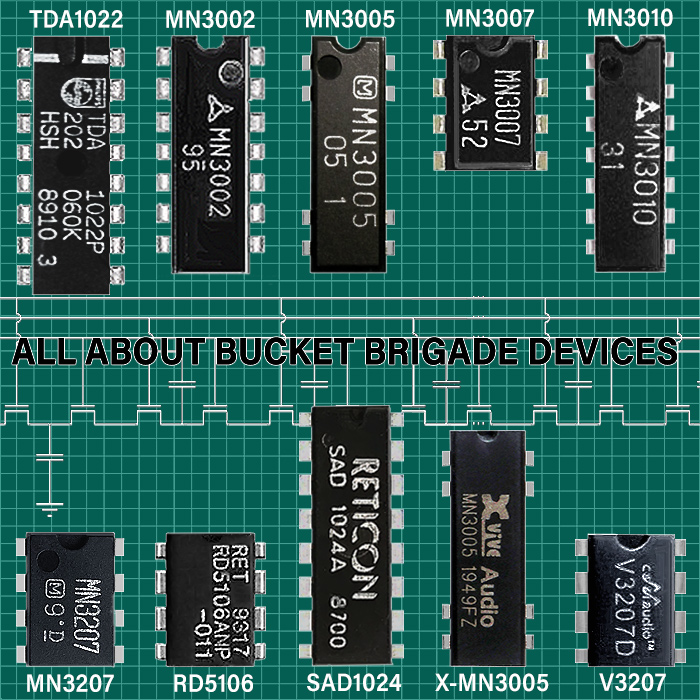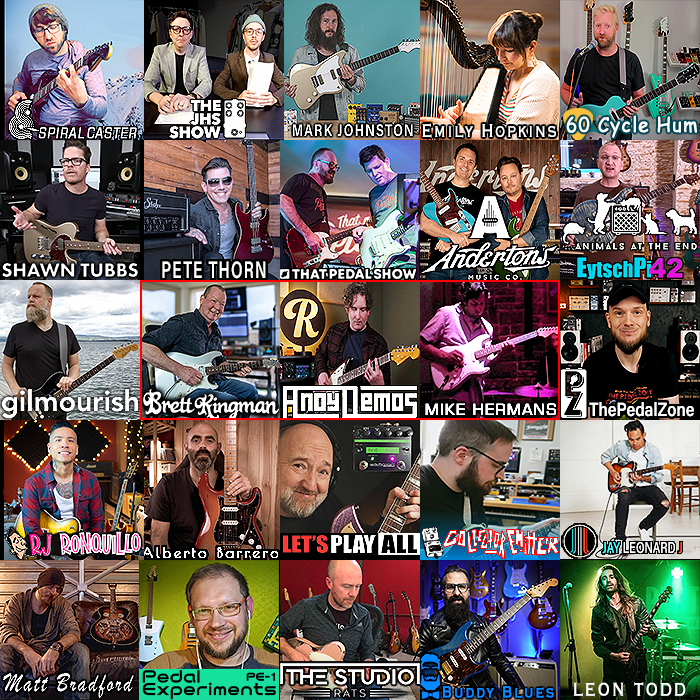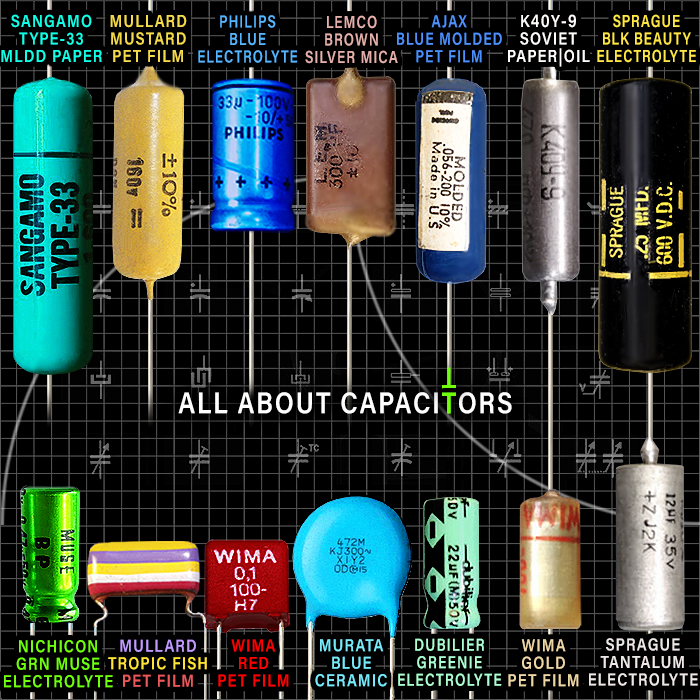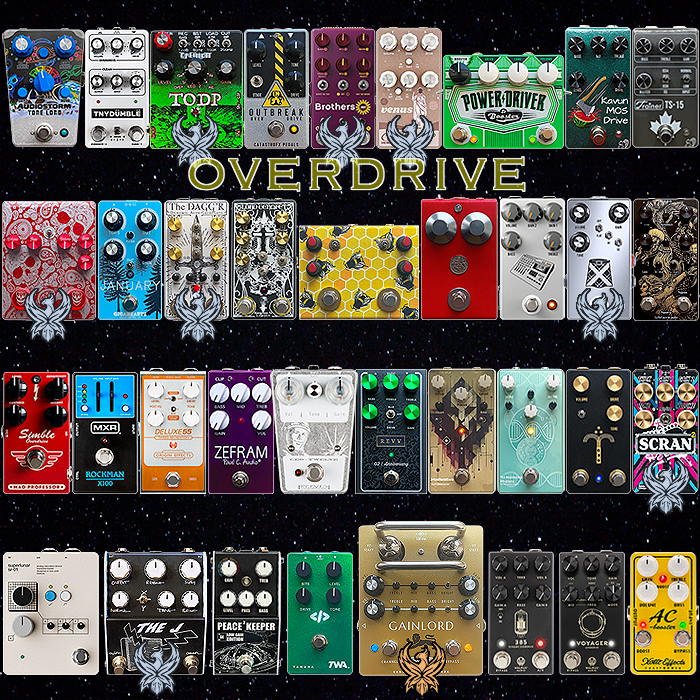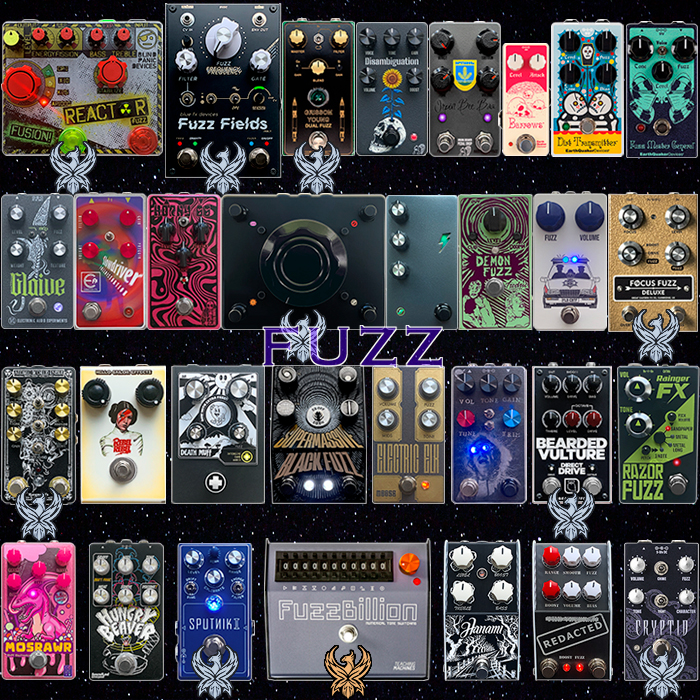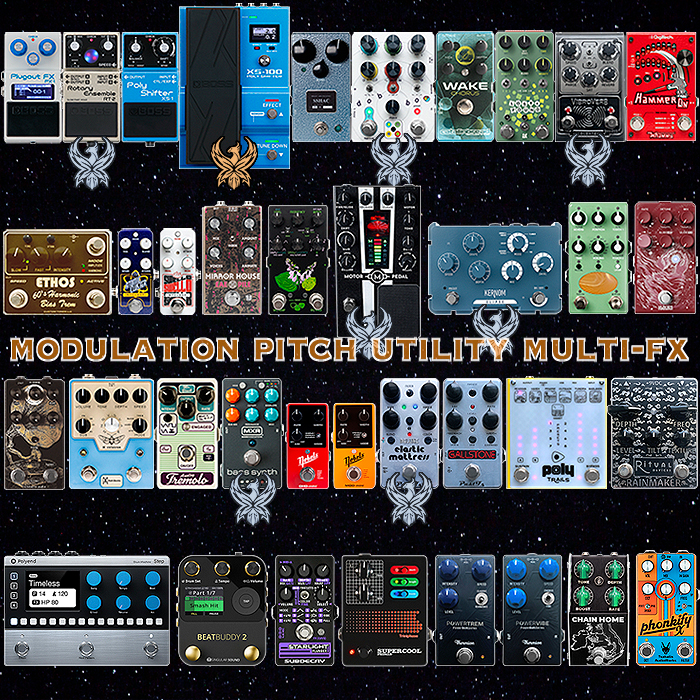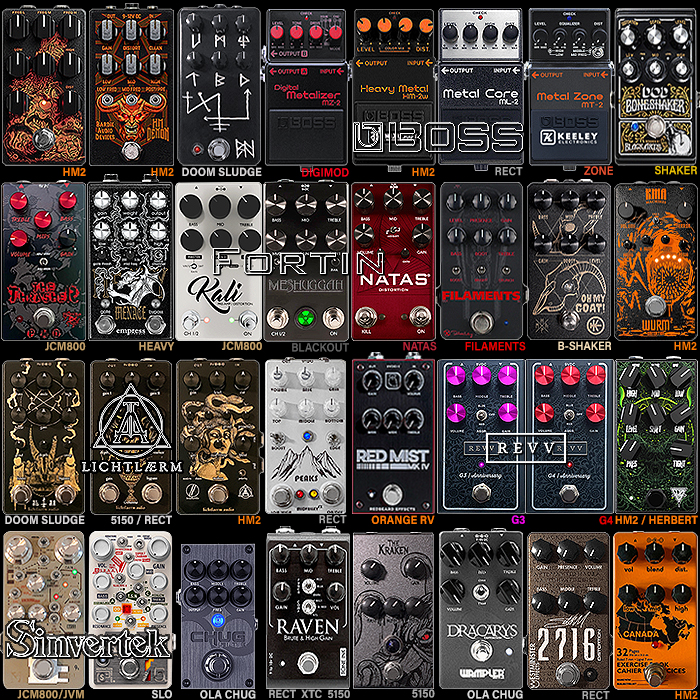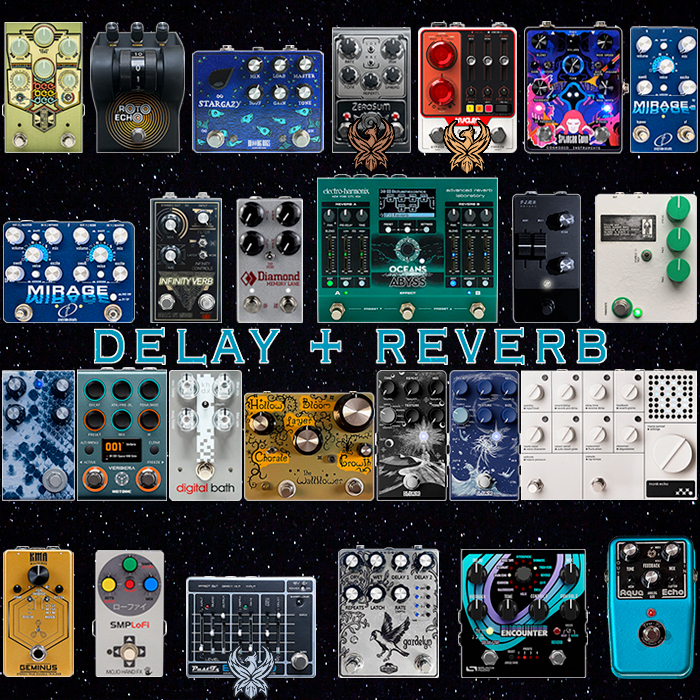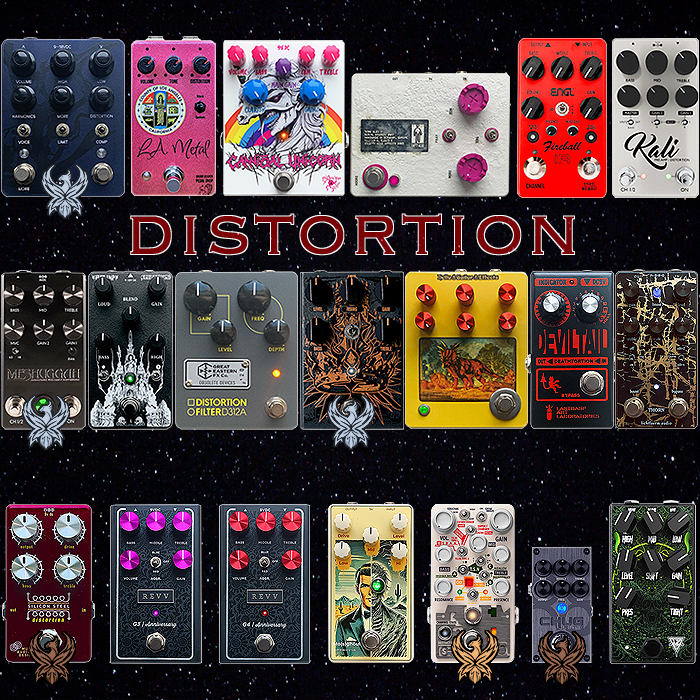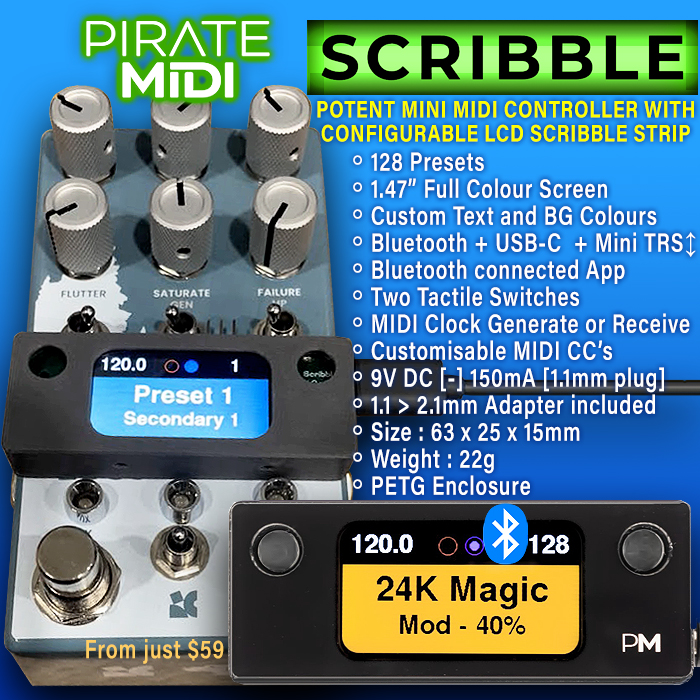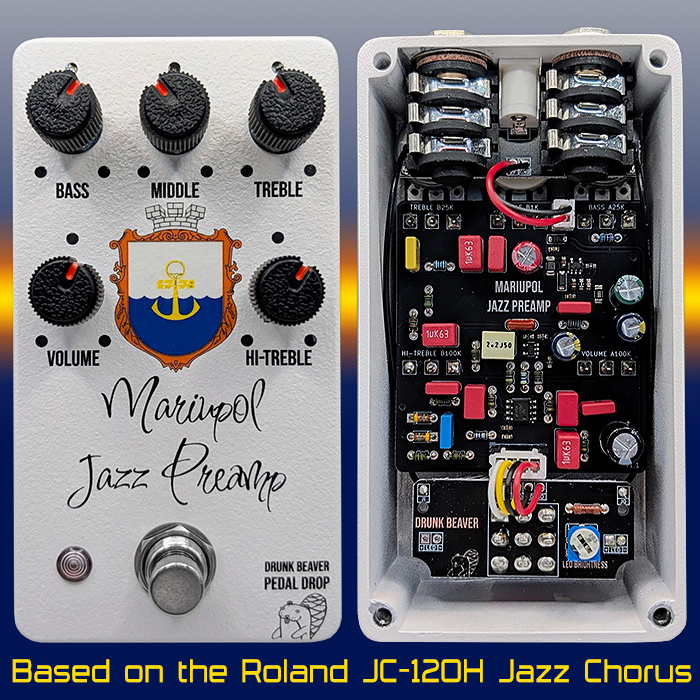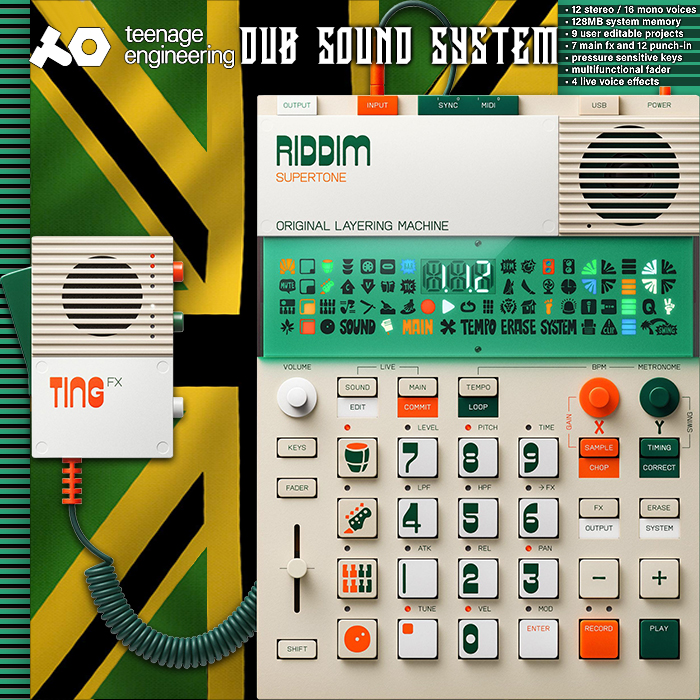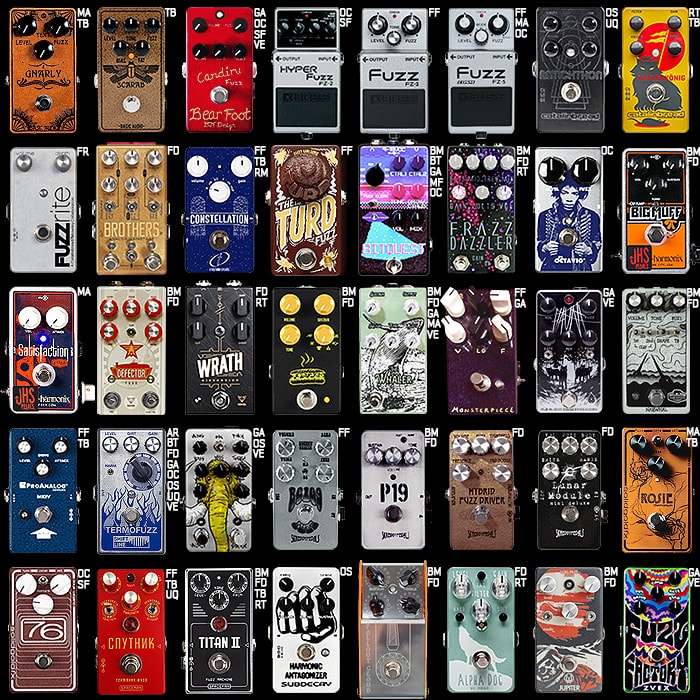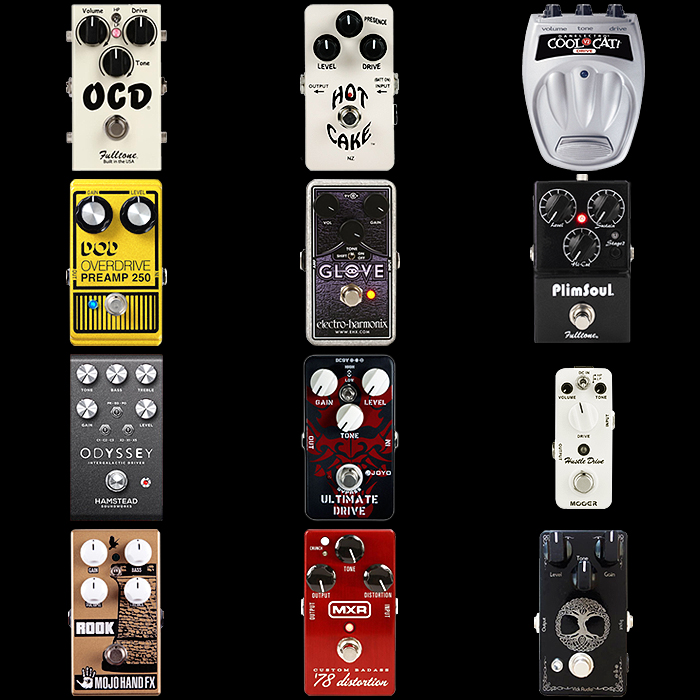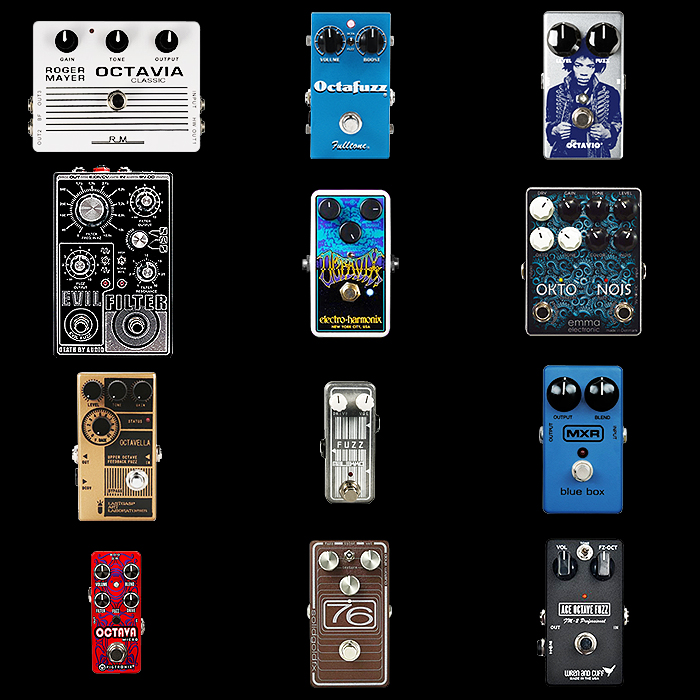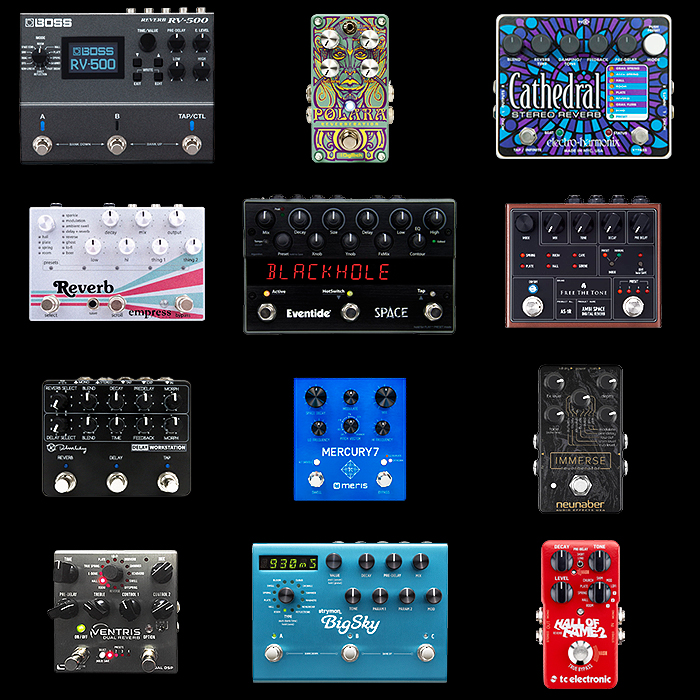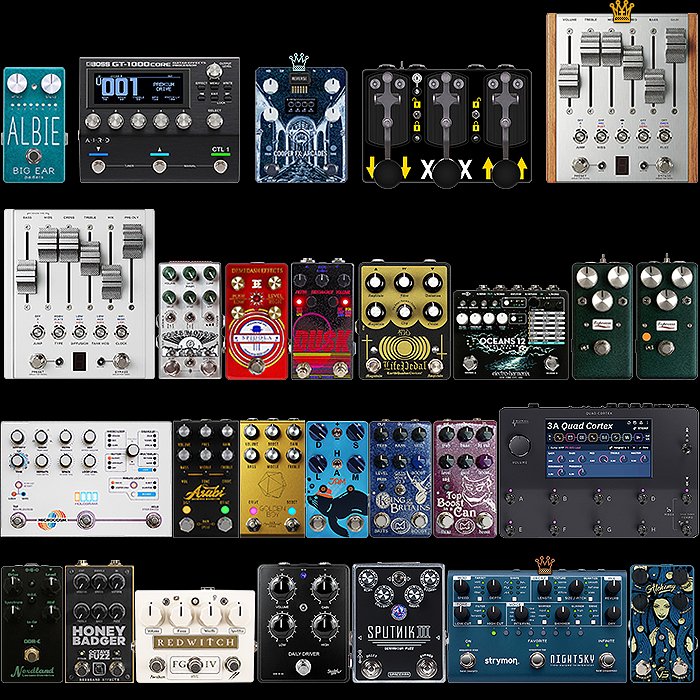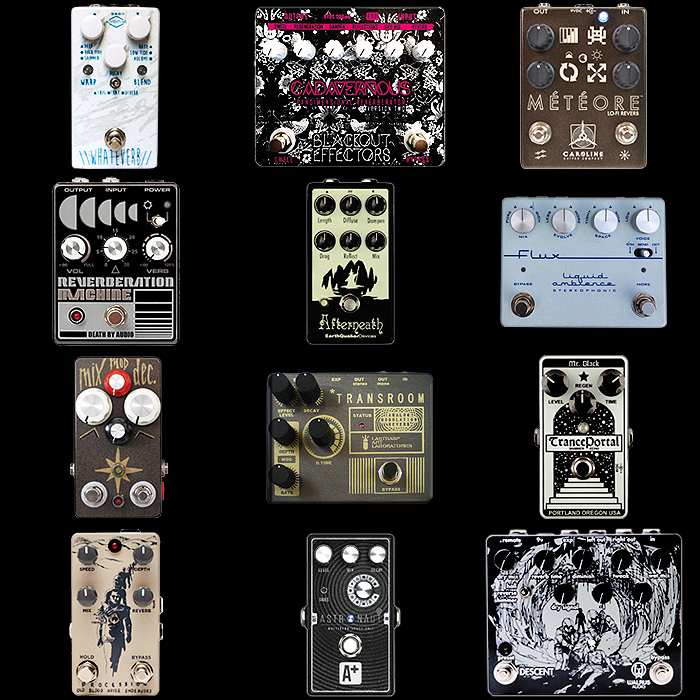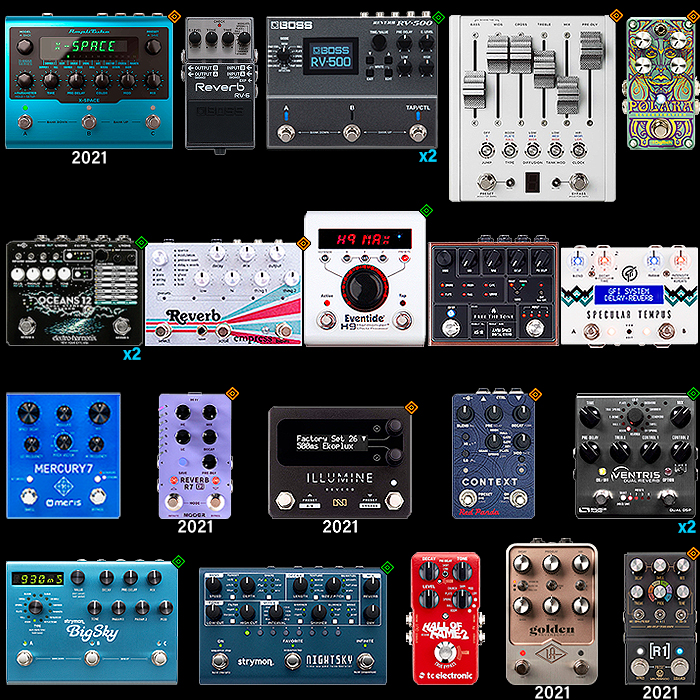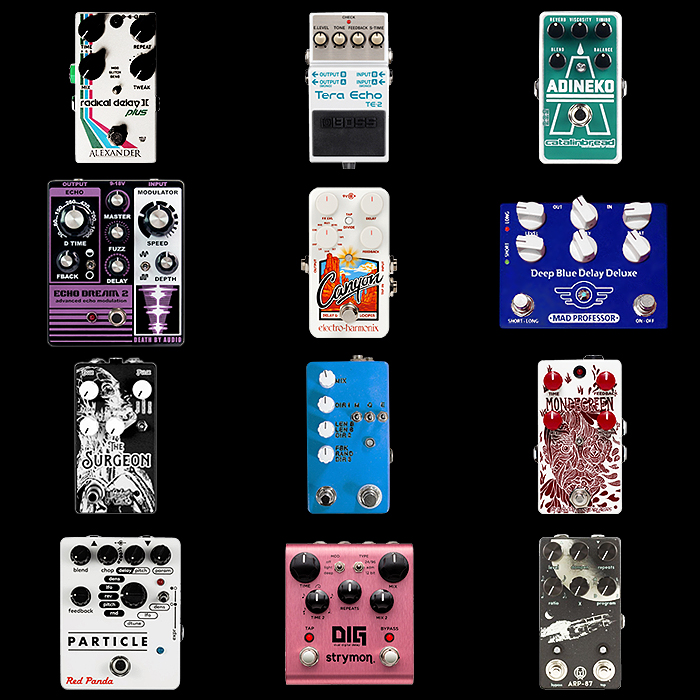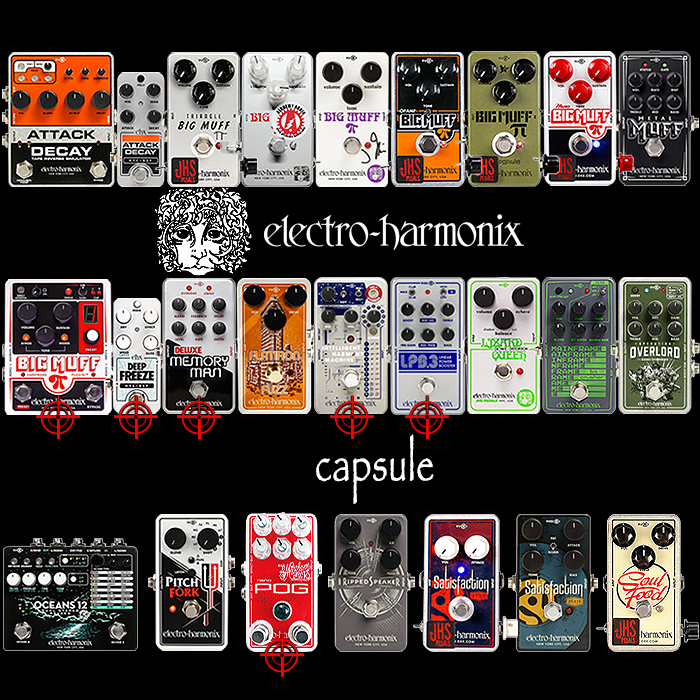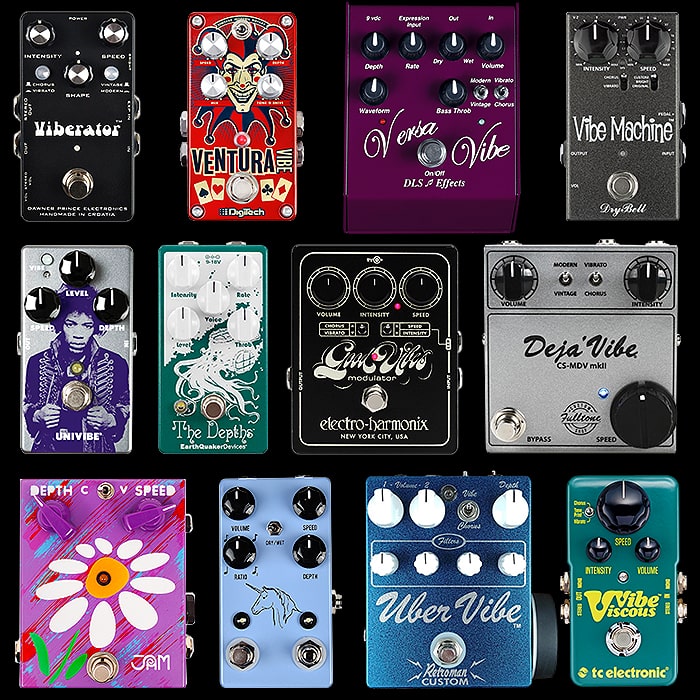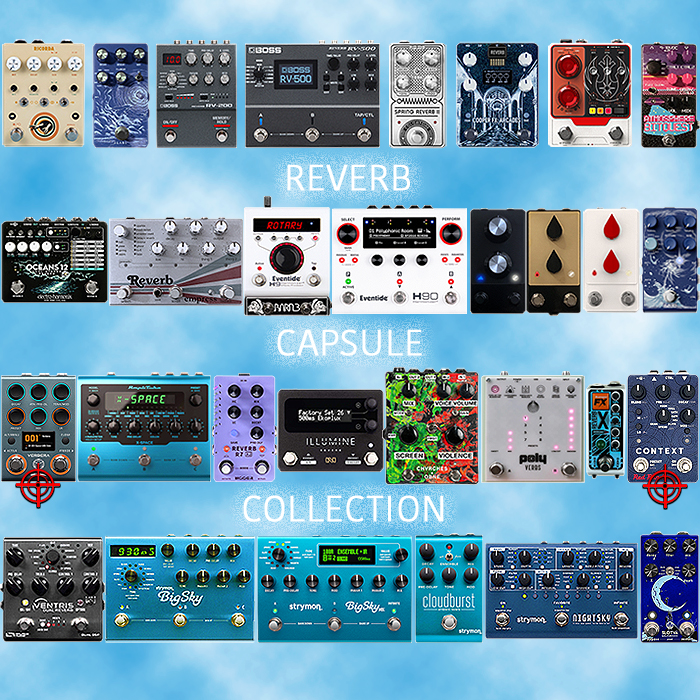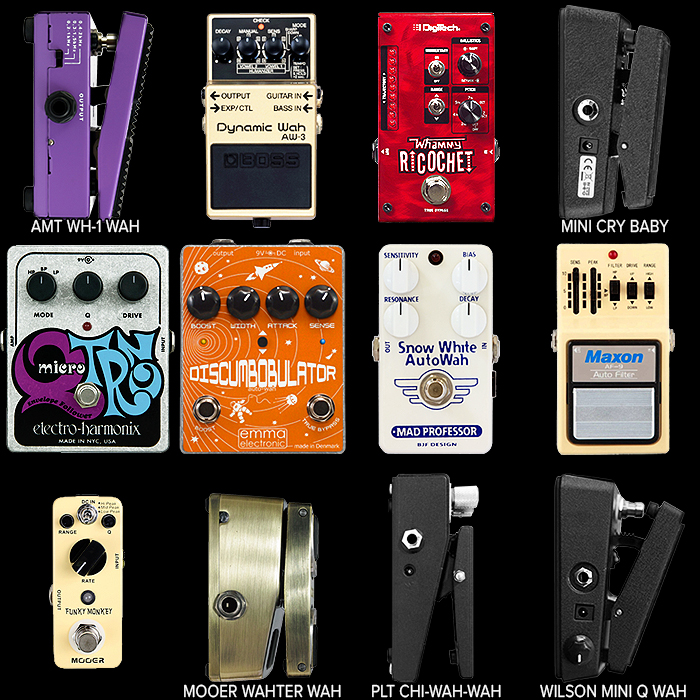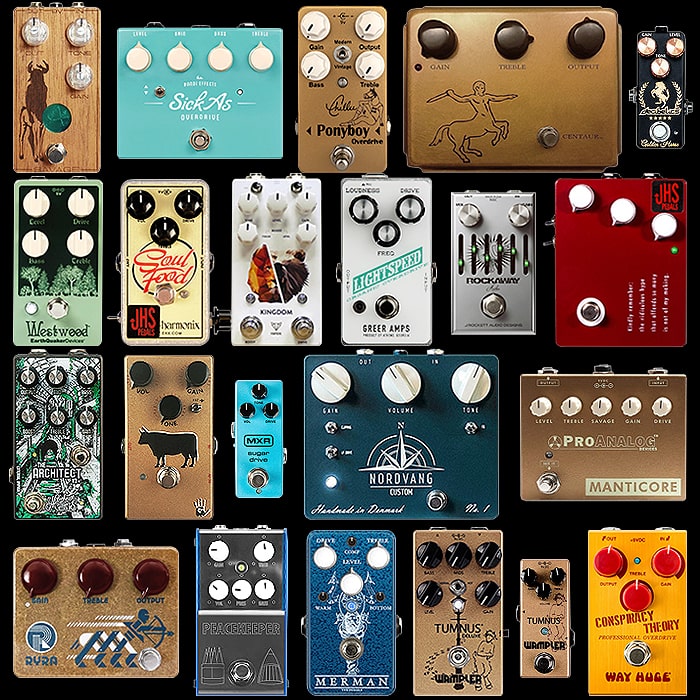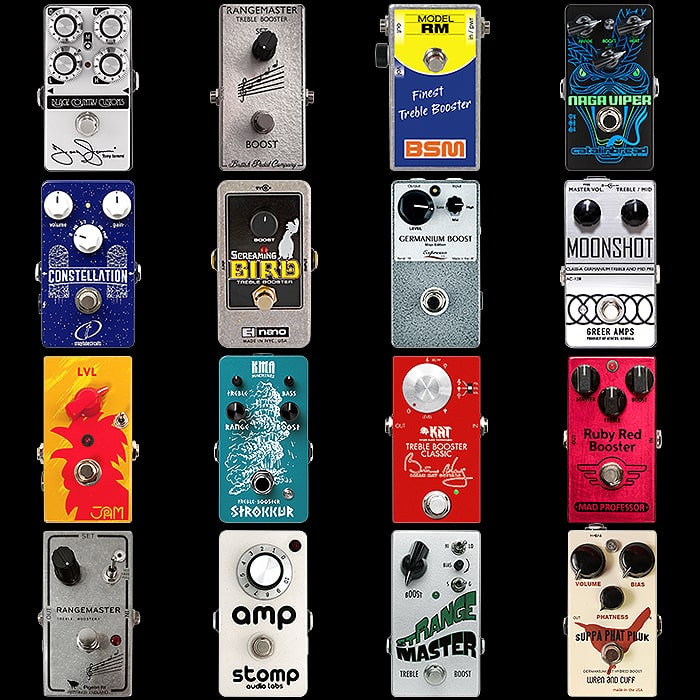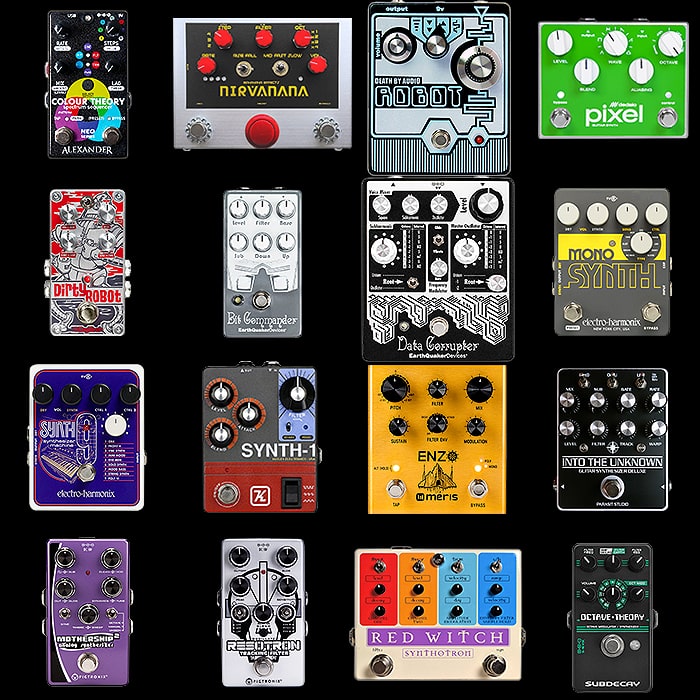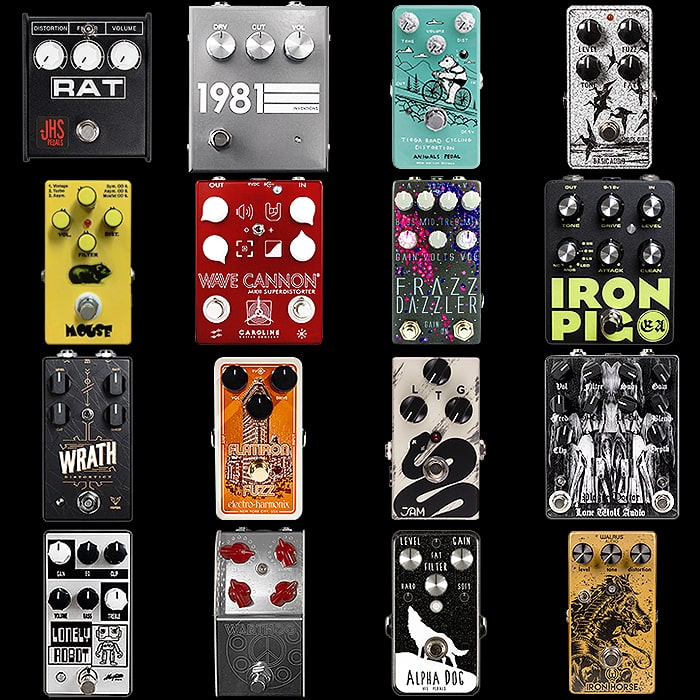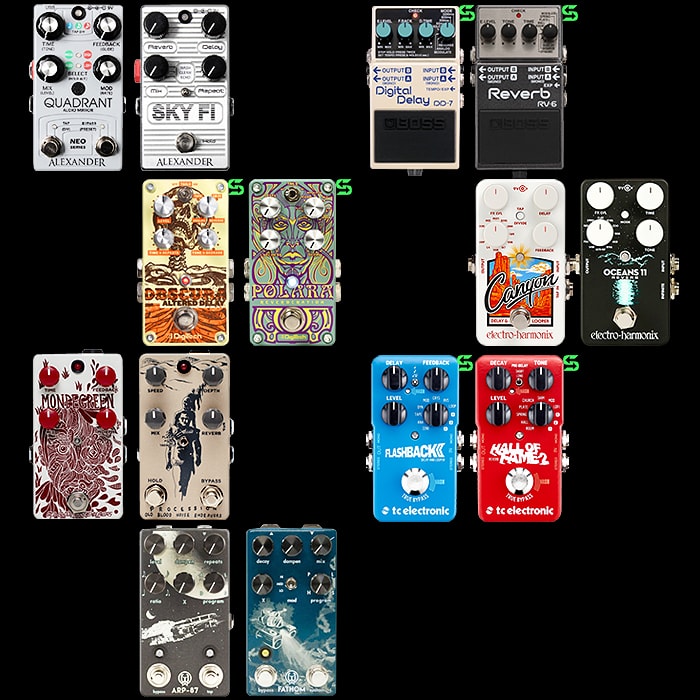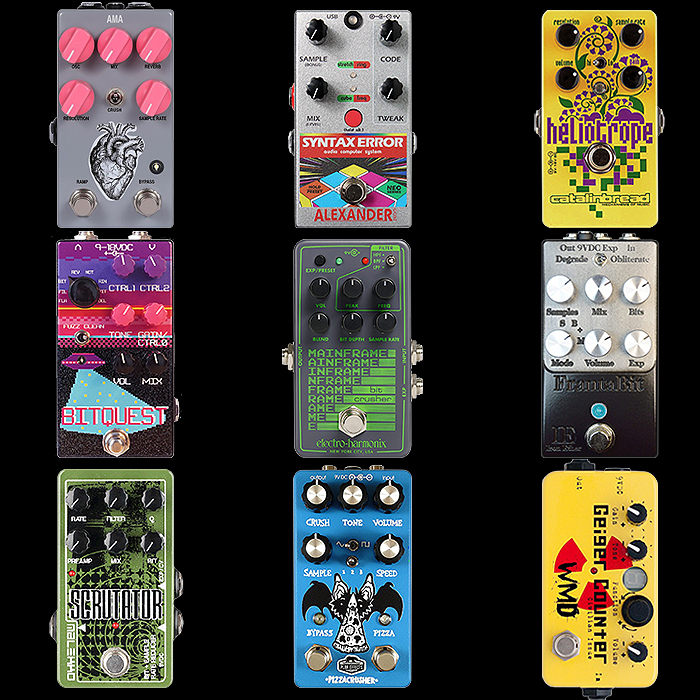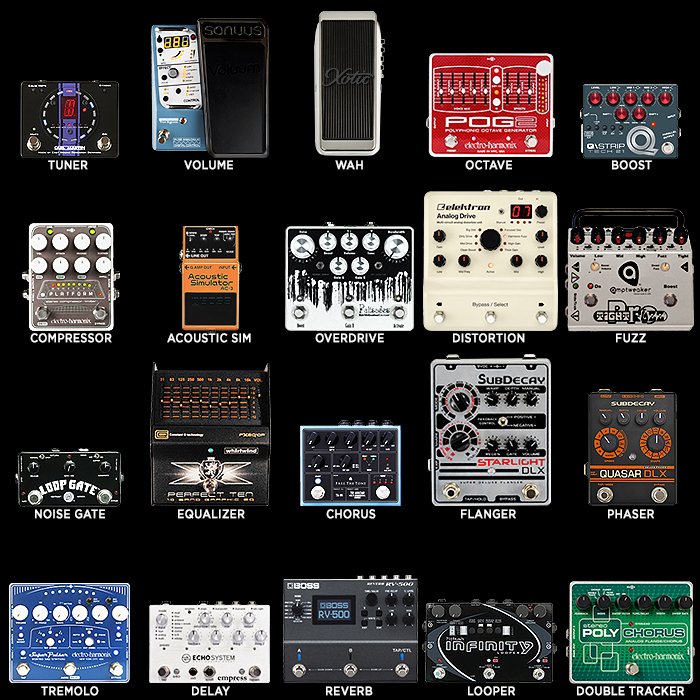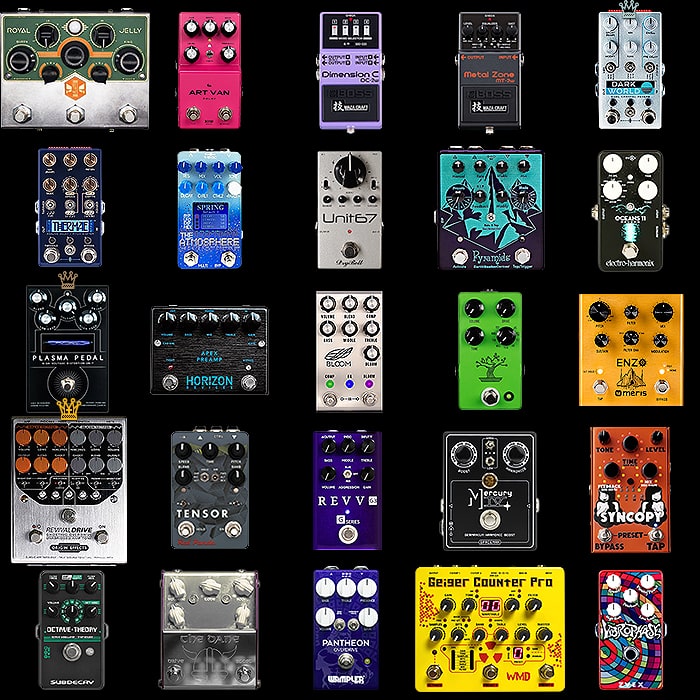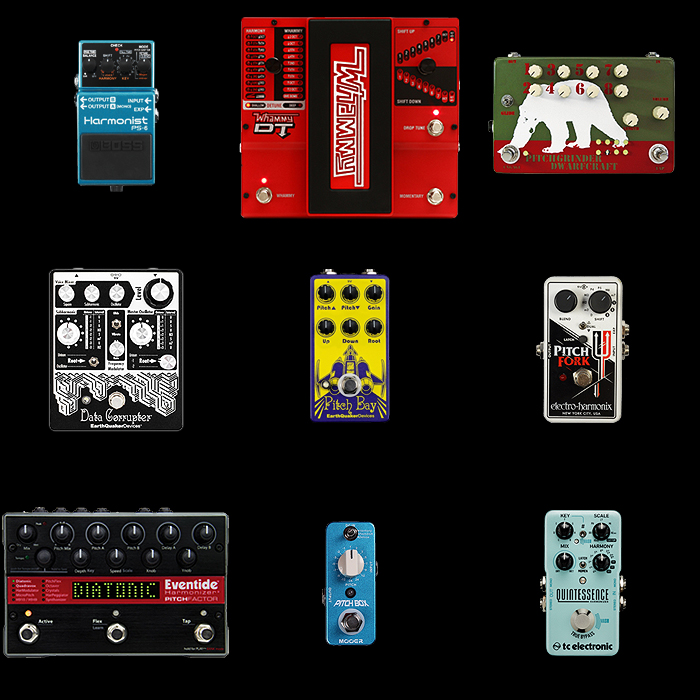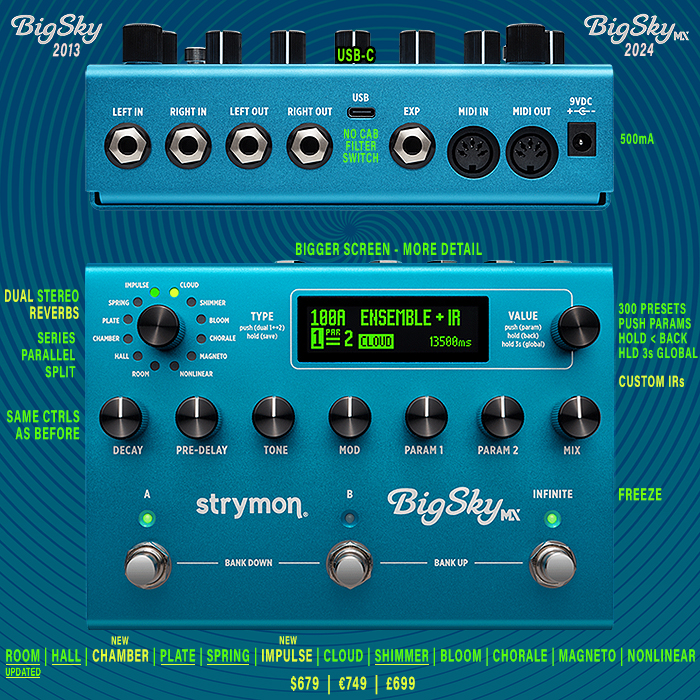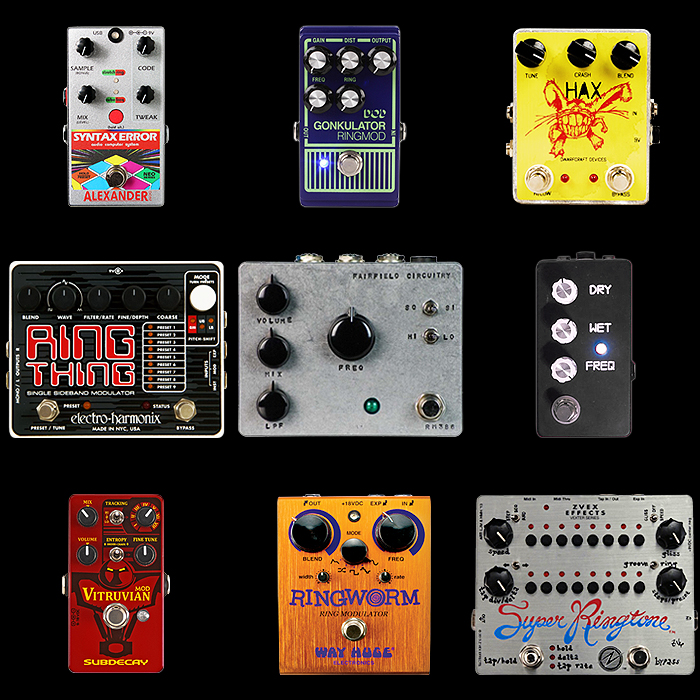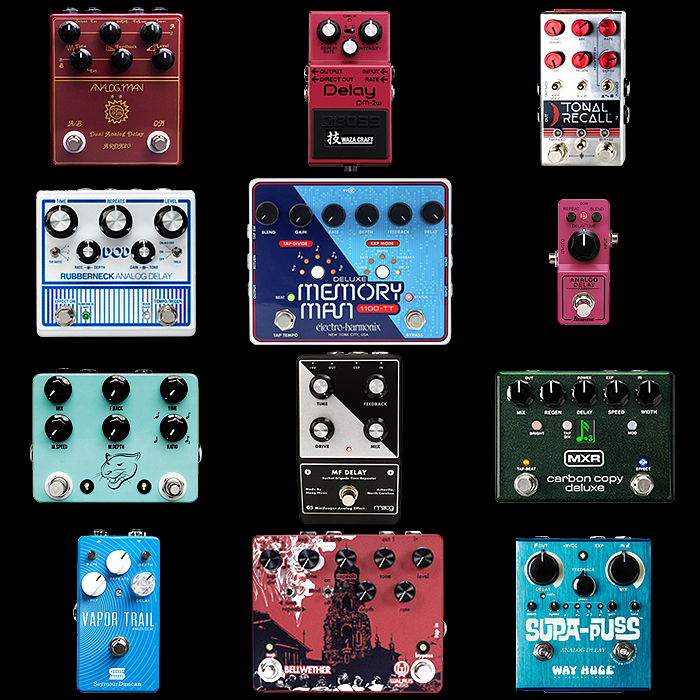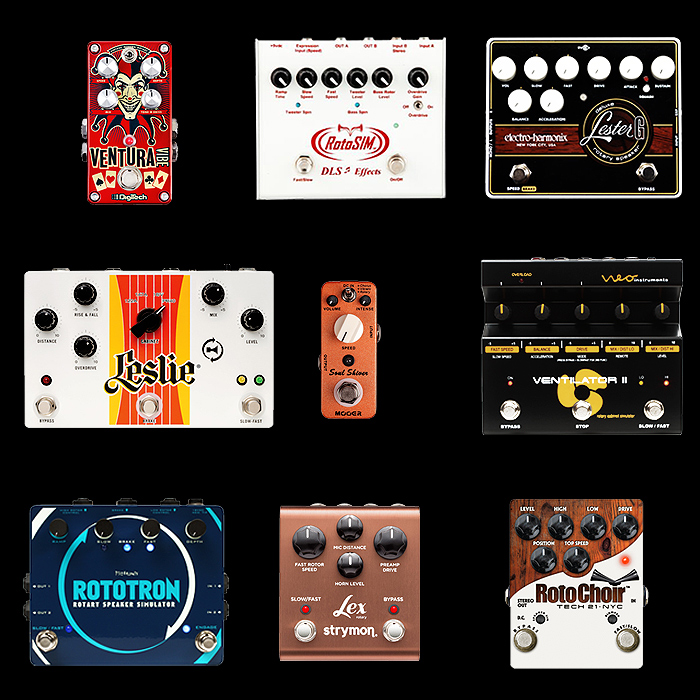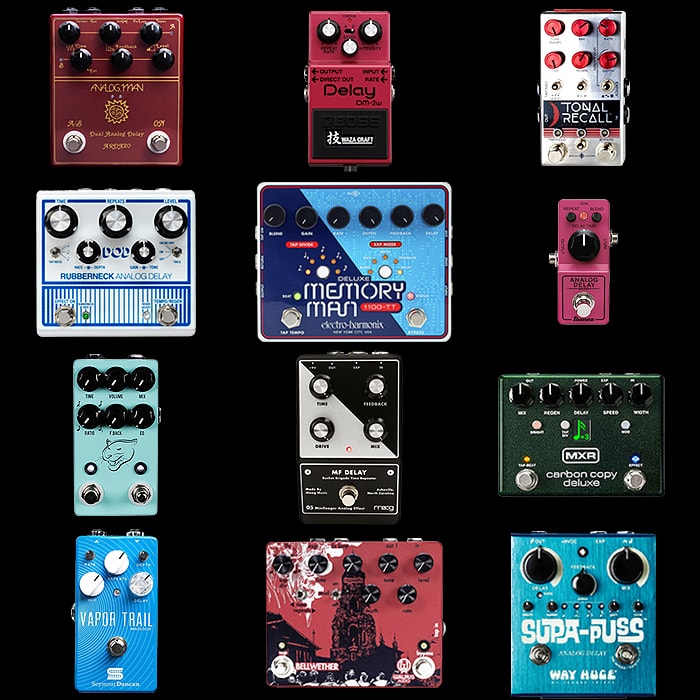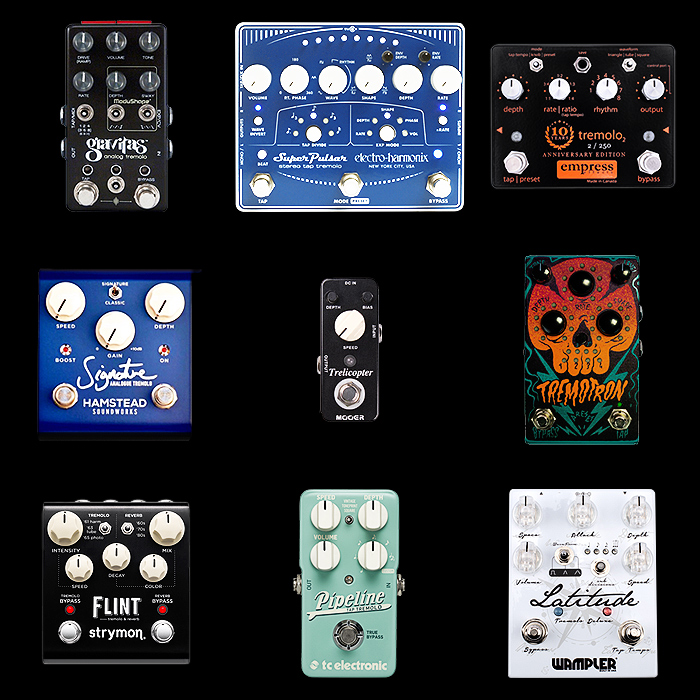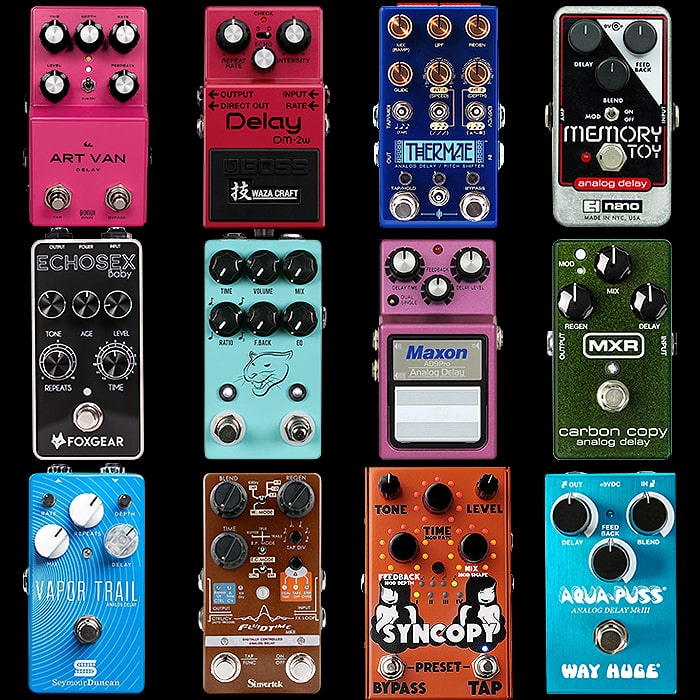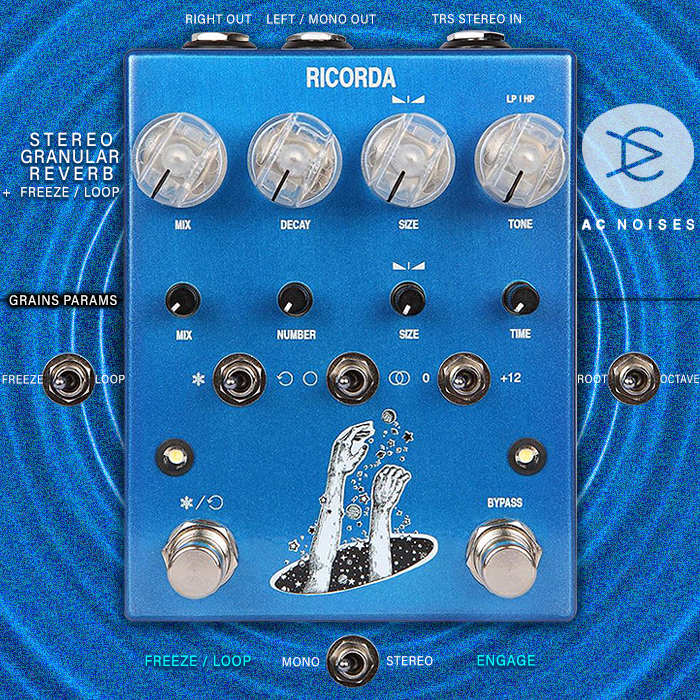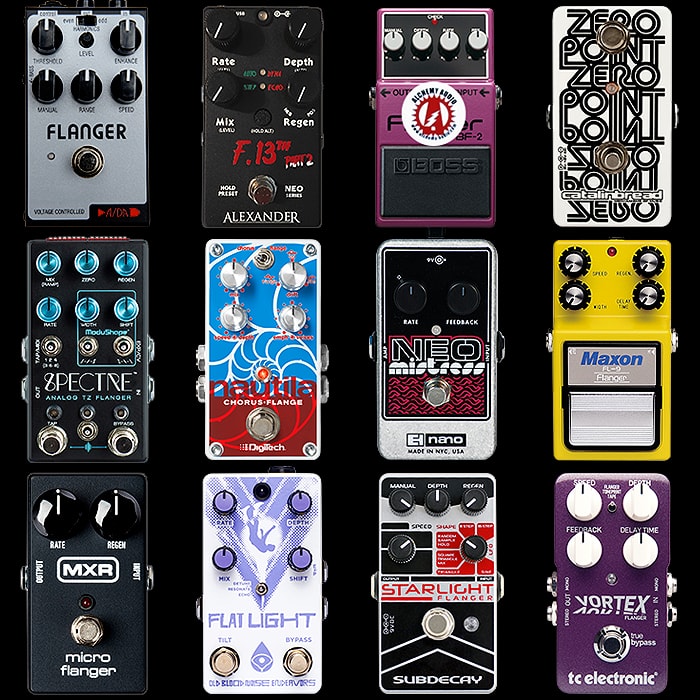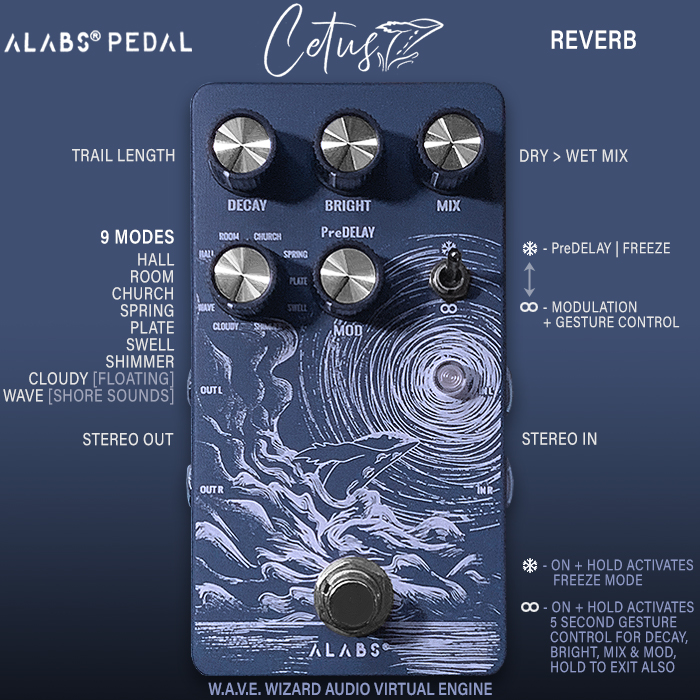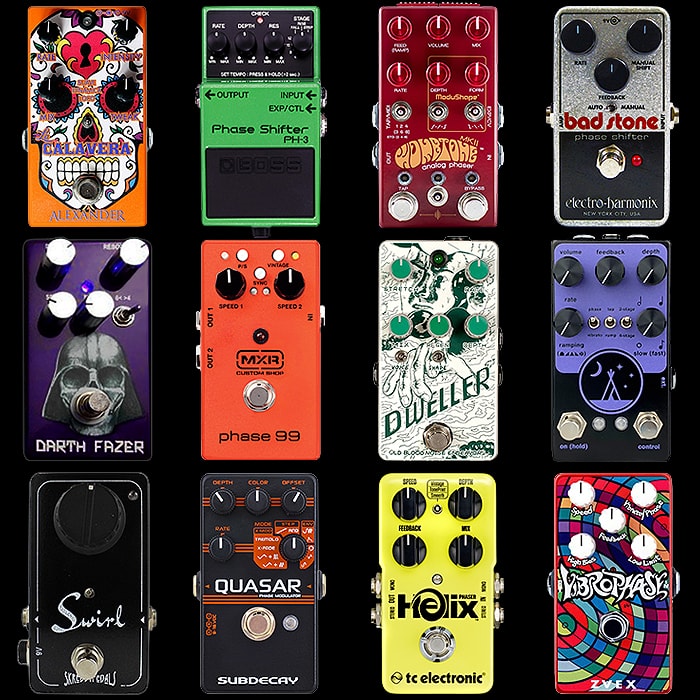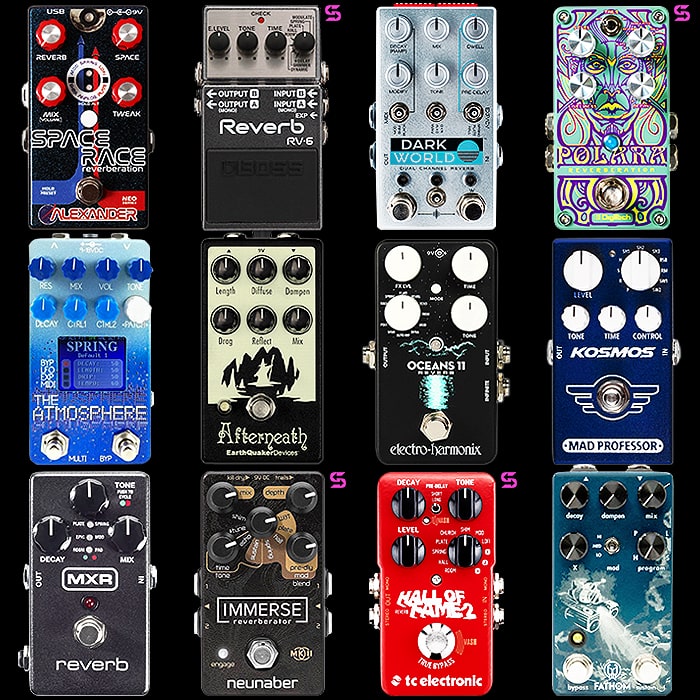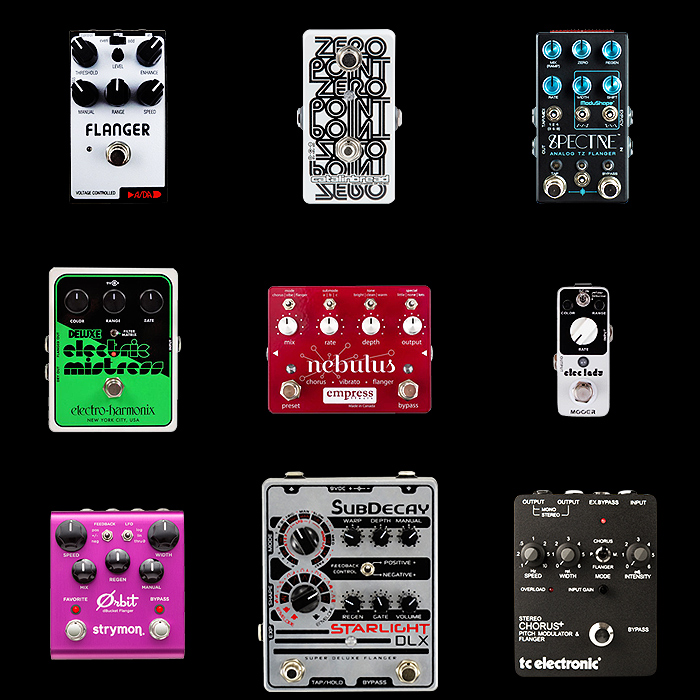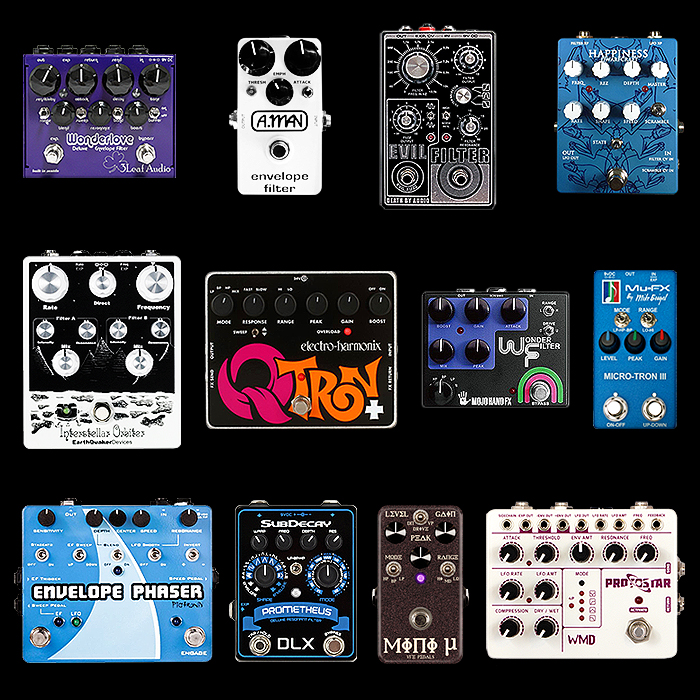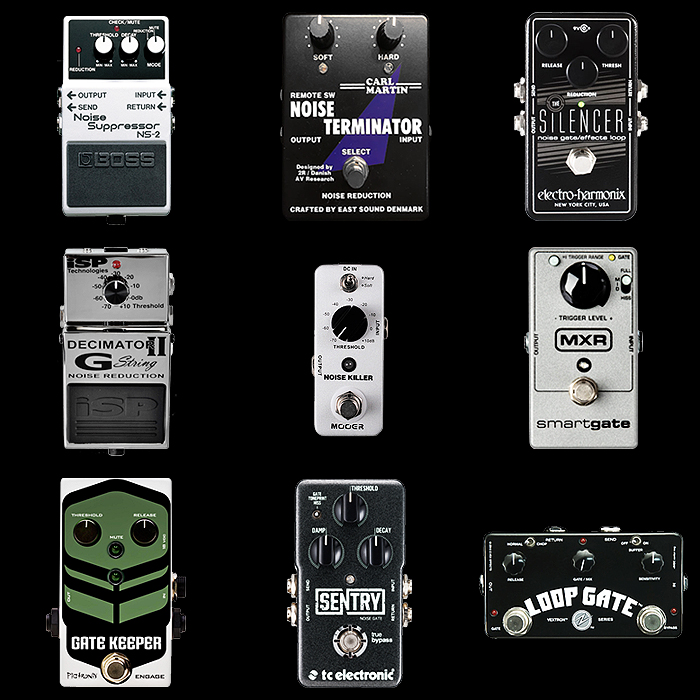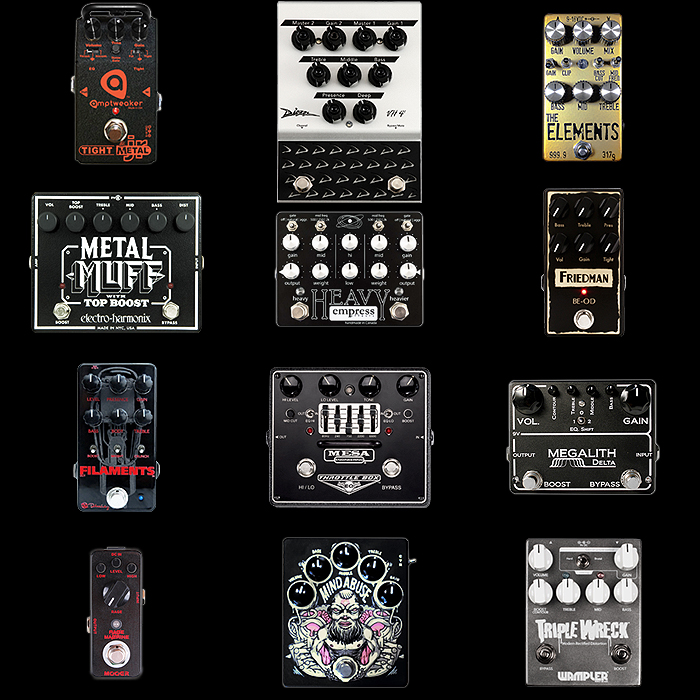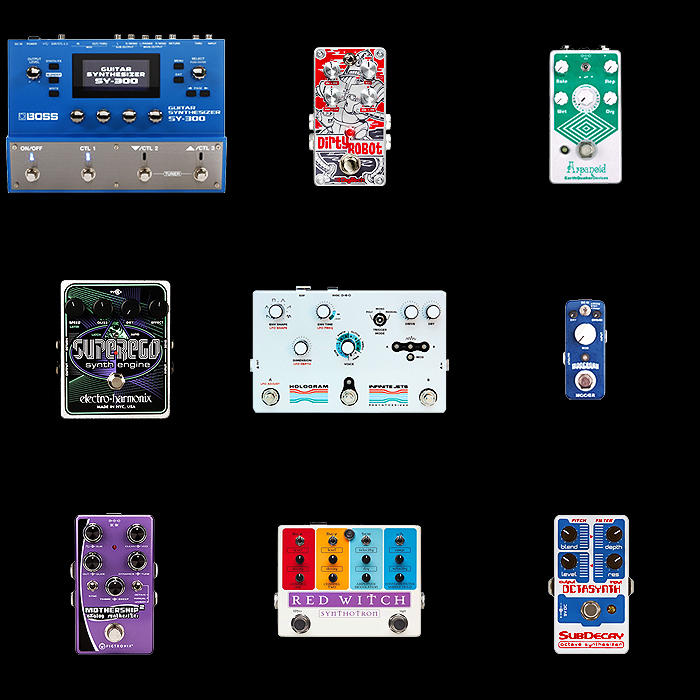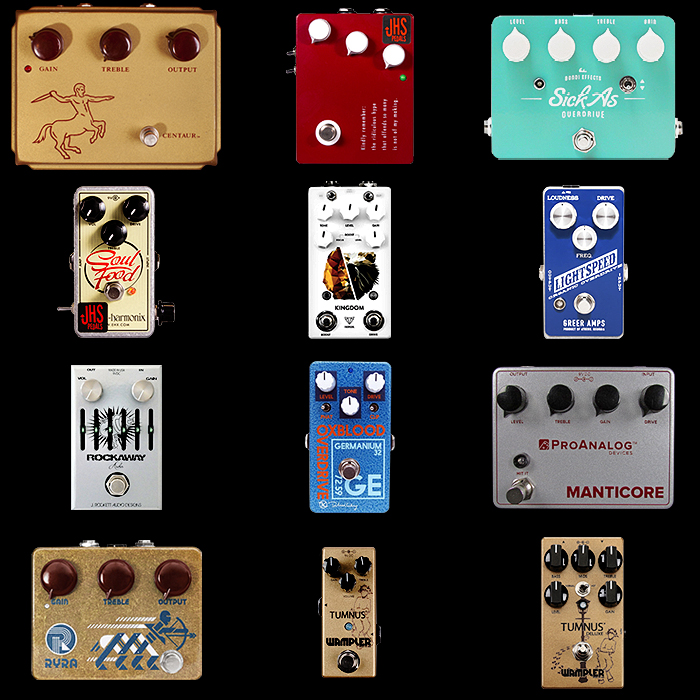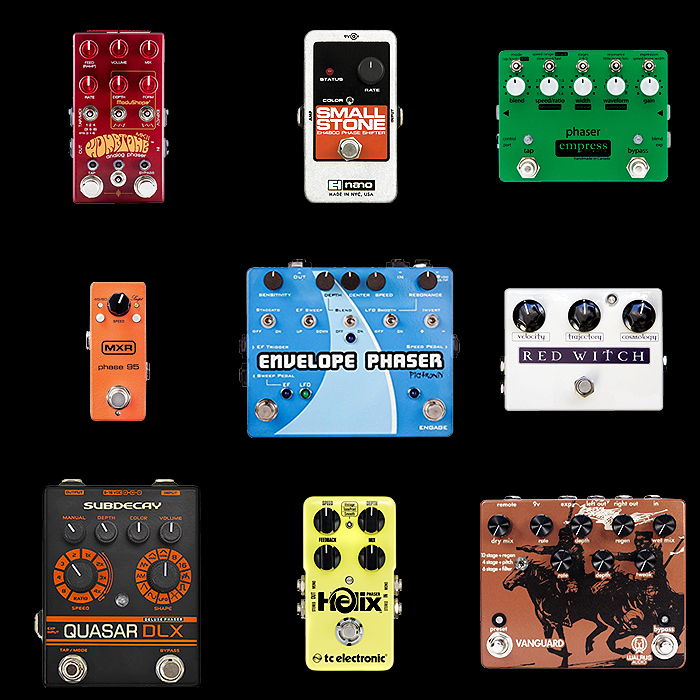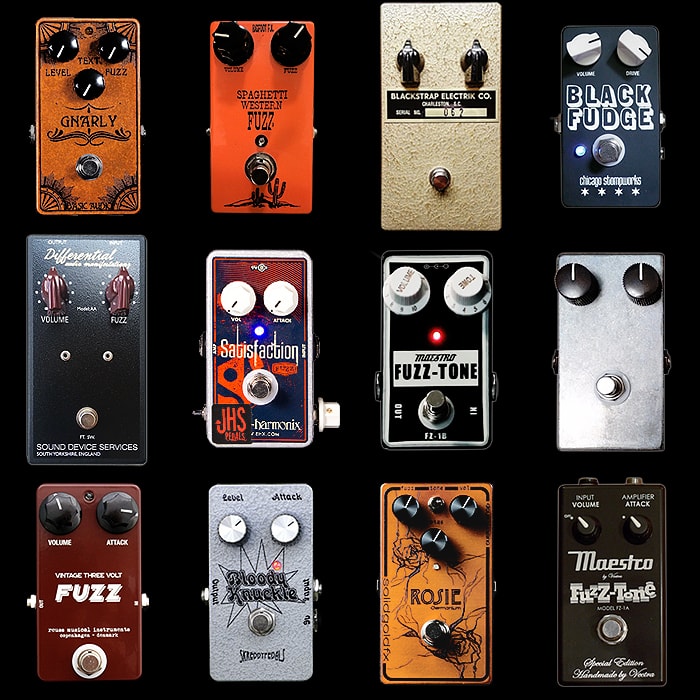Why the Forthcoming Electro-Harmonix Oceans 12 Will Be My Next Reverb - ships end of March
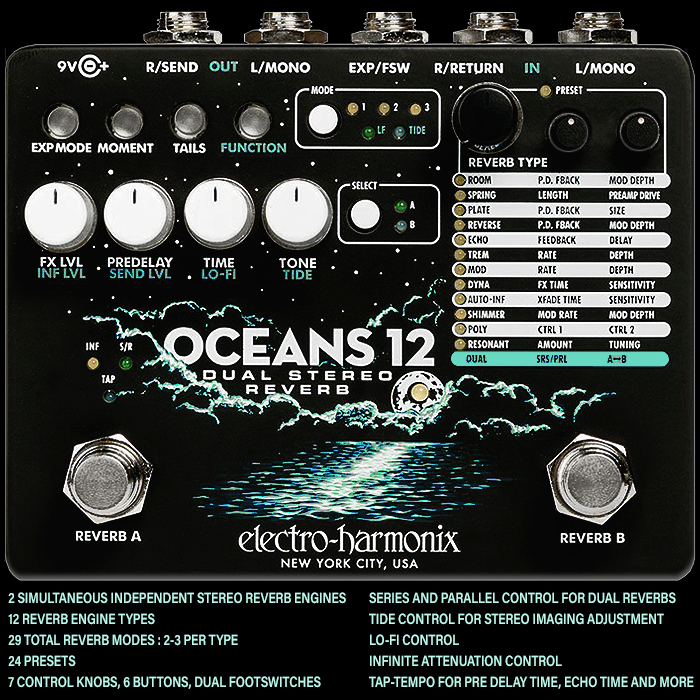
My current reverb of choice (the one on active duty) is the Source Audio Ventris - which I very much like, and has been by principal Reverb for a while - following on from my Strymon BigSky and Boss RV-500 which I still rotate in on the pedal-chain every now and again. I stated recently that I so liked the GFI System Synesthesia Dual Channel Modulation Workstation - that I would wait for GFI to bring forth its V2 Specular Tempus Delay + Reverb in that very same ingenious format.
In discussions with GFI though that project is still quite some way off - probably at least one year, so I’ve decided to roll the dice once more in the interim. I had been considering the Meris Mercury 7 too - but I’ve decided that I really like the ability to deploy dual simultaneous Reverbs in stereo - which is currently only supported by the Boss RV-500, Source Audio Ventris, and now this forthcoming EHX Oceans 12 Dual Stereo Reverb. Actually - you can do it on the new TC Electronic Plethora X5 TonePrint Pedalboard - but that’s a slightly different thing and much much larger.
What really seals the deal for me on the Oceans 12 is the intuitiveness and granularity of the wholly surfaced control topology. All the control functions and parameters are always on-hand and really easy to see and adjust - this differs from the other pedals of this type which rely on sub-menus or external apps even. In viewing the Oceans 12 for the first time - it’s pretty much immediately evident where everything sits and largely how everything likely works. There’s lots of nice little touches too - like the Function / Alternative Parameters button - which lights up to indicate that the blue legend secondary parameters are active.
You can argue that pedal A or B has better overall algorithms or some more unique ones. In fact for a while I was waiting on Empress Effects to do a similar job on their Reverb pedal - to what they did for their EchoSystem Delay which I have and love, but this does not look like it will happen any time soon if at all - that Reverb has some spectacular algorithms. The cleverness of the Oceans 12 is that each Reverb Type has up to 3 Modes - giving you a very respectable / versatile 29 Modes overall.
The Reverb Types are as follows :
- ROOM – 2 Modes : Reverb algorithms modelled after a lively Room and a spacious performance Hall
- SPRING – 2 Modes : Vintage 1962 Fender 6G15 tube reverb emulation and the spring algorithm from the EHX Holy Grail
- PLATE – 2 Modes : Two emulations of the smooth, metal Plate rack reverb often used in high-end recording studios during the 1960s and ‘70s
- REVERSE – 2 Modes : A Reverse reverb effect as well as true reversed echoes
- ECHO – 3 Modes: An EchoVerb digital delay with various echo rhythms feeding into a Plate reverb
- TREM – 3 Modes : A classic, periodic volume envelope with various wave shapes applied to both the wet and dry mix of a Hall reverb
- MOD – 3 Modes : Combinations of Chorus and Flange reverbs that create rich reverb tails
- DYNA – 3 Modes : Three dynamic, experimental reverb algorithms: Swell, Gate and Duck
- AUTO-INF – 3 Modes : Auto-Infinite reverb (with optional Chorus or Flange) that ’listens’ to your playing and crossfades to a new reverb wash upon detection of newly struck notes
- SHIMMER – 2 Modes : Two configurations of a rich Octave-Shifted reverb wash
- POLYPHONIC – 2 Modes : Two configurable bi-directional Pitch Shifts that add dimensionality to the reverb tail
- RESONANT – 2 Modes : Reverb excited by Tuneable Resonators and Configurable Self-Oscillating Filters on the reverb tail
I think I will likely need a triple footswitch add-on here to get the most out of the pedal - tap-tempo etc. I will probably go for a second GFI System Triple Switch (£59) over EHX’s own Triple Foot Controller (£40) as GFI’s version is more sleek, compact and streamlined - and fits in more easily and elegantly with my setup.
I just feel that the Oceans 12 will be a lot easier to control and tweak on the fly versus its competitors - it is feted for release at the end of March - or around one month away.
Key Features :
- 2 Simultaneous Independent Stereo Reverb Engines
- Series and Parallel Control for Dual Reverbs
- 12 Reverb Engine Types
- 29 Total Reverb Modes (as above)
- 24 Presets
- 7 Control Knobs, 6 Buttons, Dual Footswitches
- Tide Control for Stereo Imaging Adjustment
- Lo-Fi Control
- Infinite Attenuation Control
- Tap-Tempo for Pre Delay Time, Echo Time and more
Specs :
- Power Supply : 9V DC [-] 200mA
- Dimensions : 121(w) x 102(l) x 57(h) mm
- Weight : 400g
- Price : $238 / £229
- Release : End of March

